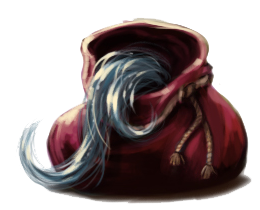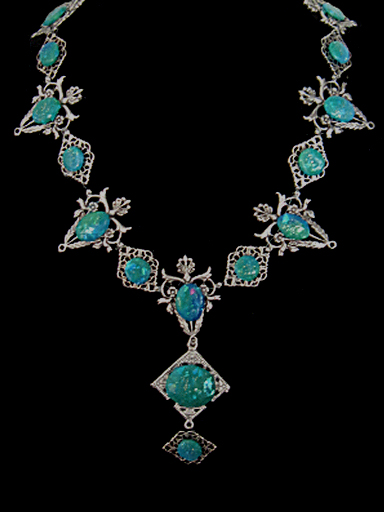Announcements
Welcome to Charms 201!
Please read the following FAQs before joining the class:
When will my assignment be graded?
Charms receives a high volume of assignments submitted each day, and our team is composed entirely of volunteers with real-world obligations. We will not prioritize your assignment over anyone elses. I ask that you be understanding and patient.
If you look in your gradebook, you will be able to see where your assignment is in the grading queue. If you notice that your assignment has not moved at all in the queue after a week, then you may message Professor Laurel or the Head Student, Britini, to look into the issue.
What do I do if I have a question about an assignment?
Please feel free to reach out to any of our PAs with your questions! Just remember: 1. PAs will never give you the answer to a question. They are here to assist you in completing your work; not to do your work for you. 2. If you have any questions or need help, it is always best to ask before you submit your assignment! Keep in mind: Blank answers are an automatic zero; it is better to always try your best!
If you have a question about an assignment that has already been submitted, please send a private owl directly to either the Head Student, Britini, or to Professor Laurel along with your Grade ID for the assignment (this can be found in your gradebook).
If you have any other questions or comments, please do not hesitate to reach out to Professor Laurel or the Head Student, Britini!
Lesson 8) For Better or Worse: Ethics and Curses
Now that we've covered all the details of magical objects themselves, we’ll spend our last lesson before the final discussing something else of significance: ethics. Being able to craft a specific magical object does not necessarily mean that you should. The heart of ethics is in determining whether or not something should, or should not, be done.
Recall from earlier lessons the act of Muggle-baiting, that is, creating a magical item that looks like something a Muggle would use but which attacks or otherwise harms them when used. Such objects not only risk harming their victims but also exposing the magical community to Muggles. When used as minor pranks between witches and wizards, it’s not as much of an issue, mostly because such pranks can be quickly dealt with. However, Muggles are typically unable to defend themselves because they don’t understand what is happening or have the ability to stop the object.
Furthermore, because the Wizarding World cannot be revealed to them, they cannot be asked for consent. While the problem is somewhat moot in the case of light-hearted pranks among witches and wizards, we will see that consent is at the heart of many ethical issues.
Compulsions

We mentioned in the last lesson something called the Compulsion Form, a Form commonly used in early twentieth century marketing. Someone might read a sign bewitched with this Form and find themselves strangely compelled to enter a shop when they normally would have just passed on by. Though this Form and all of the spells officially listed within it are now illegal, it serves as an interesting and useful example of just how complex a single, seemingly simple Form can get. Unfortunately, we don’t have time to cover it in detail here; the Compulsion Form requires careful selection and application of several advanced and delicate charms to create an effective ad optimised for one of many dynamic situations. The entire Compulsion Form is vast, and typically those who used it would go with a specific subset of charms depending upon the desired outcome. To give you a taste for how intricate this type of bewitchment can be, just a few of the factors the maker should address include:
- Scanning for potential customers, which requires spells that can collect information about a target, such as age or income. Should it consider everyone who walks by? Choose only those who read a sign, say a keyword? Do they fit the target demographic?
- The actual Compulsion Charms. These are spells with varying degrees of power, though extremely subtle versions are preferred, which can instill in the target a desire, need, or curiosity.
- Secondary effects, such as mild distractions, which help delicate, low-power Compulsion Charms really get into a person’s head in the short period of time they have to slip undetected past mental barriers and take effect.
- Specifics about what the target should be compelled to actually do -- go to a street, enter a store, give attention to an item that isn’t selling well. Though all this can easily be rolled into one during an active casting, bewitchers have found that their items are more reliable when creating desire in someone is handled separately. Specifics about that desire could then be added on in a sort of modular fashion.
- Priming the target for certain purchases. Attempts to compel people to buy certain items often ended in returned merchandise and disatisfaction. However, “Priming Charms” whose effects would linger after the compulsion effectively directed customers toward specific items they would like and therefore keep.
This Form seems to have so many combinations that it may be difficult to understand why we don’t break it down further. First, it's worth noting that the entire Form system is not an absolute. It’s simply a tool to organize and help process the astronomical number of possible charm combinations which could be applied to an Implementation. However, the official list of Forms are regularly reviewed and maintained by the International Congress on Objects and Artifacts (ICOA), in order to keep a convenient standard that the bewitching community can reference and to act as an official standard for related legislation. This brings our discussion back to ethics.

You can probably imagine a few reasons why any or all of the above spells might be deemed unethical. Ironically, it’s the very same advertising empire that led to the demise of their most lucrative technique. Bewitchers began creating shorter-lasting items to force shopkeepers to renew or replace their signs every so often. Refusing to buy bewitched signs put sellers at a disadvantage against their competitors. Eventually, they brought the issue to the Ministry, but this plan backfired, only serving to draw national attention to the techniques being used. People had always been aware of the Compulsion Form in general, but few had believed its uses were as widespread or as sinister as they turned out to be. Many expressed outrage at feeling manipulated, but the conversation took a much darker turn when stories of Compulsion Forms gone wrong started to surface. Where a small minority had been adamant that the manipulation of customer behavior for the stability of the wizarding economy was ethical, it became clear that the techniques in question were indefensible.
There are many examples of serious backfires in Compulsion Form bewitched objects. A Muggle died of starvation after being compelled to remain inside an abandoned cauldron shop outside his village after taking shelter from a storm. Some were institutionalized due to incurable obsession or delusion caused by faulty Priming Charms, which were meant to erase a customer’s bad memories of a particular item, or to create positive associations with something new. Others reported being driven to bankruptcy.
The final catalyst for change was a lawsuit against Chiswell Hetting’s Stationery Stable when young Clarence Fleury was sent out for milk, but returned instead with 300 quills and absolutely no memory of his family. Upon returning home, he assumed his elder brother was a burglar and panicked. Though he recovered after two years of intensive care at St. Mungo’s, his brother’s eye could not be saved. Mr. Fleury’s defense argued that because Clarence had been stripped of his free will by the Compulsion Form, he could not be considered guilty for his actions under its influence. Immediate and substantial support for the abolishment of compulsion-based advertising swept the nation, with the most severe campaigning directed particularly at bewitchments affecting the brain or free will. Under one final review by the ICOA, the Compulsion Form and all spells associated with it were banned from use. Being caught in possession of such an item is a Class B Punishable Offense, earning a 500 Galleon fine and up to one year in Azkaban.
It’s worthwhile to note that the Compulsion Form is not limited to greedy shopkeepers. Cult leaders and other corrupt politicians have tried to use them to influence others over the years. The difficulty of controlling the item, and targeting specific people without brainwashing your actual followers, is one of the big reasons it’s rarely seen historically. There are other, more effective ways of controlling a populace, as He-Who-Must-Not-Be-Named knew all too well.
Should This Magical Item Be Made?
Several ethical considerations also go into whether or not an item should be made in the first place. Two of the biggest ones are the ethics of material gathering and cursed items. It is well known that the most effective magical materials are willfully given and that materials taken by force are the least effective. Items that are simply found, such as a unicorn tail hair stuck in a bush, are simply magical materials! They are a nice middle ground between willfully given and forcefully taken objects.

Unicorn hair is one such material susceptible to failure when taken with force, though a wand made with it is more likely to simply fail at casting a spell. The violence with which unicorn hair is forcefully taken goes against the magical nature of the unicorn, tainting the wand. It’s interesting to note that dragon heartstring does not come with this kind of restriction. In fact, the most powerful dragon heartstrings are obtained from dragons honorably slain in combat. The use of dark magic or trickery ruins their effectiveness, but if you can win them through battle they make for the most powerful core. Dragons may also willingly give their heartstrings upon death, but these are more suited to defensive magic.
All these cases are examples of ethics at play. If we found that Bowtruckle bodies made for decent wand core material, it would still be unethical to slaughter them just for their natural material. Even magical trees, which cannot suffer, should not be needlessly chopped down to be made into wands or brooms. Removing too much wood dilutes its power, resulting in substandard material. Magic is a power in harmony with life, and injustice against any magical life negatively impacts the materials.
Cursed Objects
In most cases, cursed objects are irredeemably evil. Such objects are usually made with dark rituals and Forms, twisting dark magic into an object typically used to cause harm. Most cursed objects are activated when they come into physical contact with a living being’s unprotected skin. Their curse is transmitted from the object to the victim. Cursed objects are indiscriminate. For example, a bracelet that causes debilitating pain would affect the bracelet’s maker just as much as anyone else who was unfortunate enough to touch it or put it on.

The creation of these sorts of magical objects is considered unethical because they serve no purpose but to cause harm. Not to be confused with prank items, which may cause temporary embarrassment, humiliation, or pain, a cursed object inflicts serious, often long-lasting damage to its victim. The Ministry still studies them in the hope of finding counter-magic for the most serious effects, but otherwise they are considered illegal to buy or sell.
The most common cursed objects are actually found within ancient tombs. Witches and wizards of the ancient world often had considerable power and influence in their time. They would often amass wealth and, in their zeal, place powerful curses upon it as they entered the afterlife, believing that such magic would protect their wealth from mortals while ensuring it remained with them in the afterlife where it would do no harm.

A dear friend of mine works as a curse-breaker for Gringotts and described to me once how a typical expedition works. This group of wizards is tasked with removing the curses on valuable and dangerous artifacts in ancient tombs, most notably those of the Egyptians. Goblins pay good money for objects recovered, though the job is exceedingly dangerous. Once the base protections have been removed from an ancient site, a team of curse-breakers must infiltrate the pyramid, carefully assessing the threats within and disarming them. A single explosion could weaken the integrity of the entire structure, and working through rubble is much more tedious.
After finding a treasure room, a team will typically spend at least a few years carefully breaking the curses on the treasure before bringing it back to Gringotts. Some items are suspected to be given to the Ministry of Magic to study within the Department of Mysteries. Ancient magic is, after all, a fairly wondrous thing. Even with our current level of craftsmanship and skill, it’s difficult to create a magical item that lasts more than a few centuries, and yet most of the curses placed upon ancient treasure are still powerful today.
The biggest take-aways of this lesson should be that all cursed items must be treated with extreme caution and that the ethical procurement and use of magical items is very important.
Homework
This week’s assignment is only a worksheet, in order to give you time to begin studying for your final exams. (The wise student might consider looking over his or her past quizzes, to start.)
Image credit: Harry Potter Wiki, Youtube, Pinterest
- CHRM-101
Enroll
-
Britini
Head Student
-
Evony Senoj
Professor's Assistant
-
Will Bryce
Professor's Assistant
-
Tulip Karasu
Professor's Assistant


